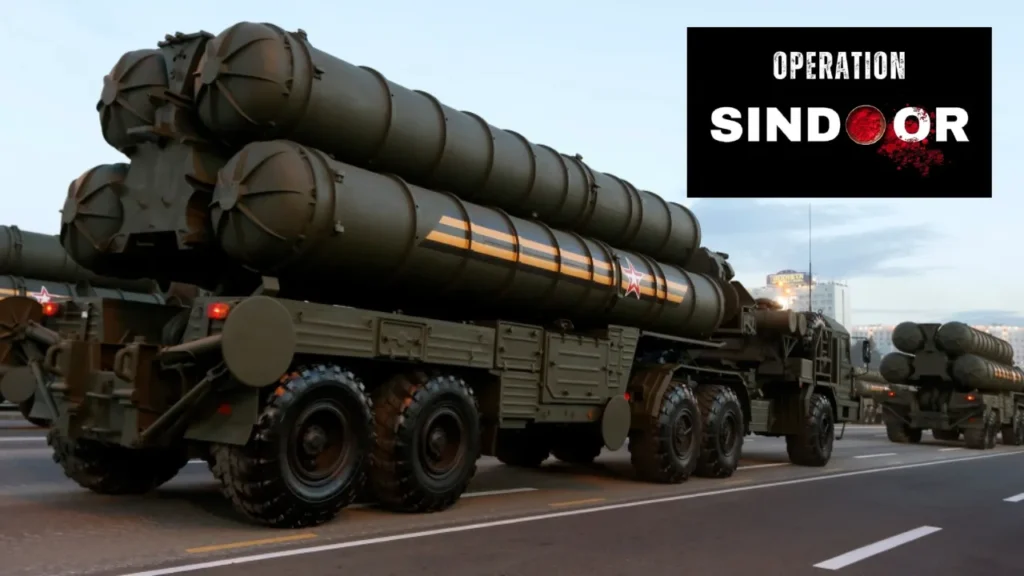Tensions escalated between India and Pakistan after Pakistani terrorists attacked 26 civilians in Pahalgam based on religion on 22 April, 2025. India retaliated against Pakistan and neutralised 9 Pakistan terror camps in the Pakistan Occupied Jammu and Kashmir and Pakistan under Operation Sindoor on May 7, 2025. The situation further escalated after Pakistan continuously violated the ceasefire agreement, leading to aerial attacks from both sides. India neutralised Pakistan’s defence system in the regions of Sialkot, Lahore and other areas.
Sudarshan Chakra in the Sky: When Speed Meets Precision
India increased its aerial surveillance in recent years. Among the weapons, S-400 air defence systems known as Sudarshan Chakra gained high prominence in neutralising the enemy’s aerial attacks. When the group of F-16 jet fighters takes off from the main Pakistan Air Force base in Sargodha. Approximately 300 km east, at the Indian Air Force base in Adampur, Punjab, an S-400 Triumf air defence system picks up these aircraft almost instantly. Because of its blistering speed of 17,000 kph, an S-400 missile fired from Adampur takes just 65 seconds to hit an F-16 flying over Sargodha.No radar in Pakistan can detect a missile travelling at that speed. The radar lock-on light flashes in their cockpits, unnerving the F-16 pilots, and they peel further southwest, away from the Adampur battery’s radar range. But now they are tracked by another S-400 battery stationed near the Jodhpur air force base, 527 km away. Between the overlapping coverage by India’s multiple S-400 battalions stationed along the border, Pakistan Air Force aircraft can run but not hide. This is the Fishbowl Effect – the feeling of being observed from all sides.
S-400 Missile: A Revolutionary Weapon in Modern Air Defence
The S-400 missile is a long-range surface-to-air missile system developed by Russia’s Almaz Central Design Bureau. It is proven, it is the most advanced air defence system in the world. It is capable of detecting, tracking a variety of aerial threats like drones, stealth aircraft, cruise missiles and ballistic missiles. It neutralised 80 per cent of an enemy aircraft. Each S-400 squadron consists of two batteries, equipped with 6 launchers, surveillance and engaging radars. Each battery can support up to 128 missiles.
It can engage aerial threats up to 400 km and an altitude of 30 km. It can track up to 160 targets and engage 72 simultaneously. This air defence system has increased the vulnerability of all Pakistani air assets, especially fighter aircraft, missiles and drones, by several orders of magnitude. India’s deployment of the S-400 has squeezed the operational capabilities of the Pakistan Air Force’s offensive as well as defensive assets. India signed an agreement with Russia for $ 5.4 billion in 2018 to procure five squadrons of the S-400 system. Presently, 3 squadrons are operational, and the remaining 2 are expected by 2026.
Why air defence is a critical aspect of war
If the enemy can penetrate your airspace, his first targets are high-value military and industrial establishments, as well as transport networks. Because of India’s vast landmass, the Indian Air Force cannot be in all places at all times. The long range of the S-400’s powerful Active Electronically Scanned Array (AESA) radar fills these gaps. The missile system can even take out low-observable aircraft. “For the S-400, there is no such thing as ‘stealth’ aircraft; the system will see it and will shoot it down,” an S-400 battery commander was quoted as saying in the Russian media. The S-400 can “see” everything both in the air and on the ground, and can easily discern even a tiny aircraft. “Even if a plane is flying low and with the same speed as a vehicle moving on the ground, the radar will show it on the screen.”
The S-400 missile system stands as the backbone of India’s aerial defence system. It is a vital asset in modern warfare, covering a multi-layered shield against aerial attack. Deployment of S-400 missiles along the border strengthens India’s national security.

